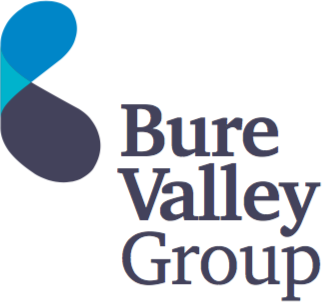The UK’s non-dom regime is changing. In October 2024, the Chancellor (Rachel Reeves) confirmed that a residential-based system would replace this 200-year-old system in April 2025.
Naturally, this will have big implications for non-doms regarding tax, investing and other areas of financial planning. However, there are still options available.
In particular, the Enterprise Investment Scheme (EIS) could offer a valuable route to help non-doms build a tax-efficient portfolio in the years ahead.
Below, we explain what is happening to non-doms, how EIS works and how it could help the former with their early-stage investment planning in 2025.
We hope these insights are helpful. If you’d like to explore our EIS opportunities at our exclusive investor network at Bure Valley Group, please get in touch.
What’s happening to non-doms?
“Non-dom” is an abbreviation for “non-UK domiciled individuals.” It refers to people who are regarded as tax residents in the UK but have their permanent home overseas.
This centuries-old system allows non-doms to keep foreign income and gains outside of the UK tax net. These only become subject to UK tax (e.g. income tax and capital gains tax) if they are brought into the country.
This is known as the “remittance basis.” It has existed for as long as 15 years. However, it will end in April 2025 when the new Foreign Income and Gains (FIG) tax regime comes into force.
The new system will allow certain non-doms to claim full exemption on their foreign income and gains for the first 4 years after becoming UK tax residents. After that, their worldwide income and gains will fall under the UK tax umbrella.
The FIG regime will not be available to non-doms who have been UK residents for any of the past 10 years. It is not mandatory for those moving to the UK after April 2025.
Indeed, some may choose not to apply for the FIG regime because certain UK tax benefits are removed after successful application (e.g. the capital gains tax annual exemption).
What is EIS?
As non-doms explore their options after the announcement of the FIG regime, the Enterprise Investment Scheme (EIS) has drawn more attention.
EIS is a tax-efficient mechanism for investing in early-stage companies in the UK. In particular:
- Up to 30% income tax relief on the value of EIS investments
- Tax-free capital gains on EIS shares
- Capital gains tax (CGT) deferral when non-EIS gains are invested into EIS shares.
- Loss relief
- Possible inheritance tax (IHT) relief
You can invest up to £1m into EIS-qualifying investments each tax year; or up to £2m if the companies are deemed “knowledge-intensive.” The typical minimum EIS investment is about £10,000, with options to invest in individual companies or EIS funds.
How EIS could help non-doms
To claim the income tax relief under EIS, you need income that is subject to UK Income Tax. Otherwise, most non-doms with the financial means will be able to use the scheme.
EIS could be helpful to existing non-doms who want to stay in the UK past April 2025. For instance, certain overseas assets could be sold in 2024-25, and the gains could be ploughed into EIS shares.
These shares would then be exempt from UK capital gains tax (CGT). However, the non-dom would need to seek specialist tax advice to ensure that all tax liabilities are properly planned for (e.g. possible CGT that may be due in other jurisdictions upon asset disposal).
EIS reliefs are quite generous but are subject to complex rules that require careful thought – ideally in discussion with a specialist tax adviser.
Be careful not to assume that you can simply sell your overseas assets, invest the gains in EIS shares and then sell them without a CGT liability two years later. The rules are more complex than this. For instance, to qualify for full CGT relief upon EIS share disposal:
- You must have claimed income tax relief on them.
- The shares must still qualify under EIS rules.
Not all companies currently eligible for EIS will continue to qualify. Eligibility criteria include:
- Having fewer than 250 full-time employees.
- Less than £15m in gross assets.
- Less than seven years in trading history
- No quotation on a recognised stock exchange (e.g. the LSE).
If an EIS company expands successfully, it may fall outside of the EIS rules. As such, investors and non-doms need to be mindful of how this could affect their tax position when constructing their early-stage portfolios.
EIS could also play a role in inheritance tax (IHT) planning. Under the outgoing tax regime, non-doms did not pay UK inheritance tax on their overseas assets. However, under the new FIG system, a new test will be used to determine whether non-UK assets fall under IHT in the UK.
For some non-doms planning to stay in the UK, this will inevitably bring more of their worldwide assets under the scope of UK inheritance tax. Here, EIS could play a mitigating role.
Previously, EIS shares qualified for full exemption from IHT if an investor held them for at least two years. The rules have changed after the Autumn Statement, with newly-purchased EIS shares now subject to a 20% effective rate of IHT.
However, 20% is still lower than the standard 40% rate which applies to an individual’s estate upon death (after other allowances).
In closing, EIS could offer non-doms a way to navigate the upcoming FIG regime with greater efficiency. However, speak with a financial adviser to explore your full options. Whilst EIS can be a powerful tool for tax planning, the risks involved with these early-stage investments are not right for everyone (e.g. those with a “cautious” investor profile).
Want to speak to us about our early-stage opportunities at our exclusive investor network? Get in touch today to explore our startup projects at Bure Valley Group.
+44 160 334 0827


